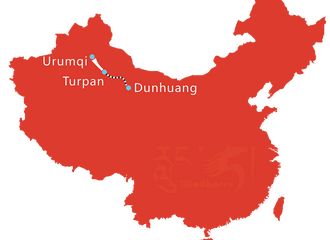Top 10 Local Foods you should try in Beijing
There is a saying in China that food is the paramount necessity of the people. Eating now is not only the meaning of filling the stomach, but also represents a kind of food culture. As one of the six famous ancient capitals in China, for thousands of years, the delicacies of various ethnic groups in China have influenced each other, merged, and sublimated in Beijing, forming a unique and abundant Beijing flavor.
Beijing's food culture is broad and profound. After decades and hundreds of years of operation, many delicacies and restaurants have accumulated excellent cuisine quality and authentic dishes here. Below we list the top 10 local foods you must try in Beijing when making a tour to China.

1. Beijing Roast Duck 北京烤鸭
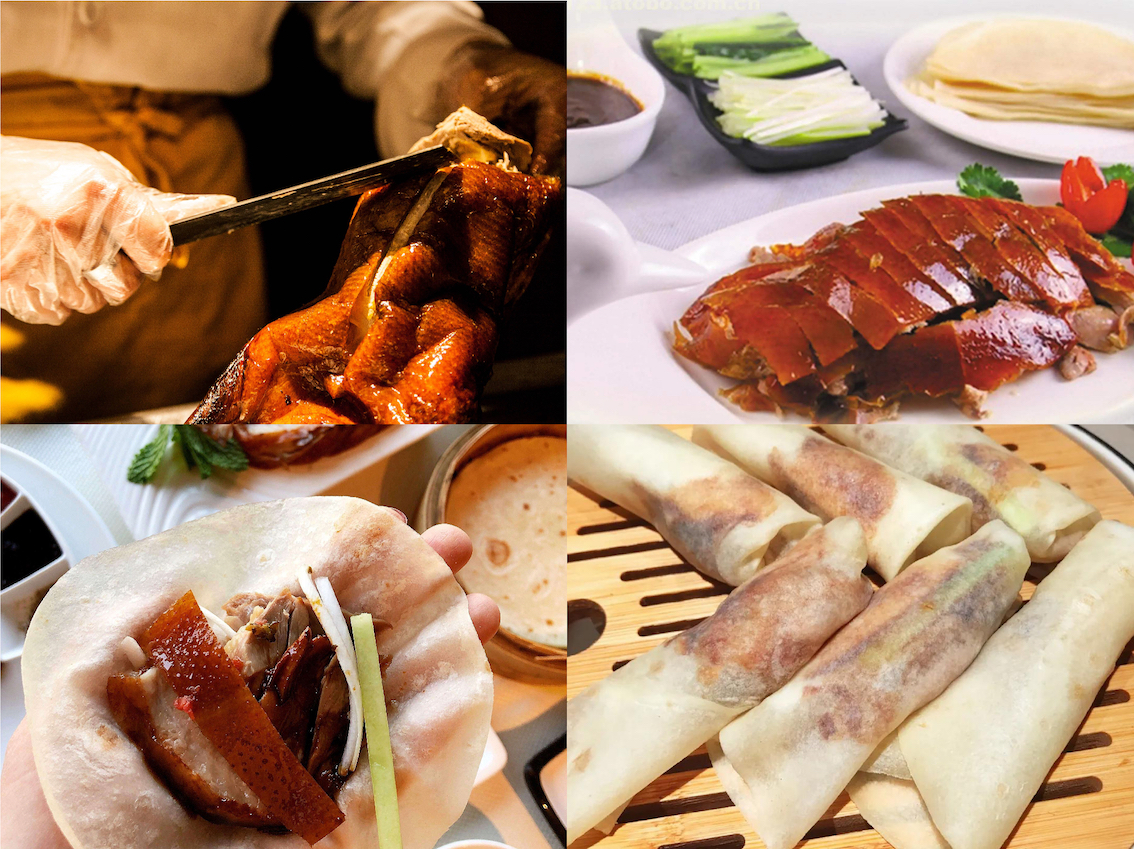
Roast duck is a famous Beijing dish with a world reputation. It originated in the Southern and Northern Dynasties of China (AD 420-589) and was a palace food at that time. Beijing duck is made of high-quality meat duck, roasted by the charcoal fire of fruitwood, the color is rosy, the meat is fat but not greasy, crispy outside and tender inside.
In the early Ming Dynasty (AD 1368-1644), ducks were a favorite food of both the common people and the emperor. The royal cooks in the palace tried every means to develop a new way of eating duck to please the emperor, which led to the invention of two kinds of roasting duck: One is grilling duck on a charcoal fire with an iron fork, another is roasting duck in a stewed oven. From then on, Beijing roast duck is divided into two major kinds, and Beijing's most famous roast duck restaurant is also the representative of the two kinds.
The roasting duck on charcoal fire with the iron forks is represented by Quanjude, which opened its first restaurant in Beijing in 1864. In more than 150 years, countless branches have been opened in Beijing and many cities in China, which are deeply fond of the Chinese people. The Bianyifang Roast Duck Restaurant, which is unique in its oven roast duck skills, has a longer history than Quanjude and was founded in 1416. Currently, Bianyifang has eight restaurants in Beijing, as well as 2 branches in Henan and Shanxi provinces.

2. Mutton(Mongolian) Hotpot 涮羊肉
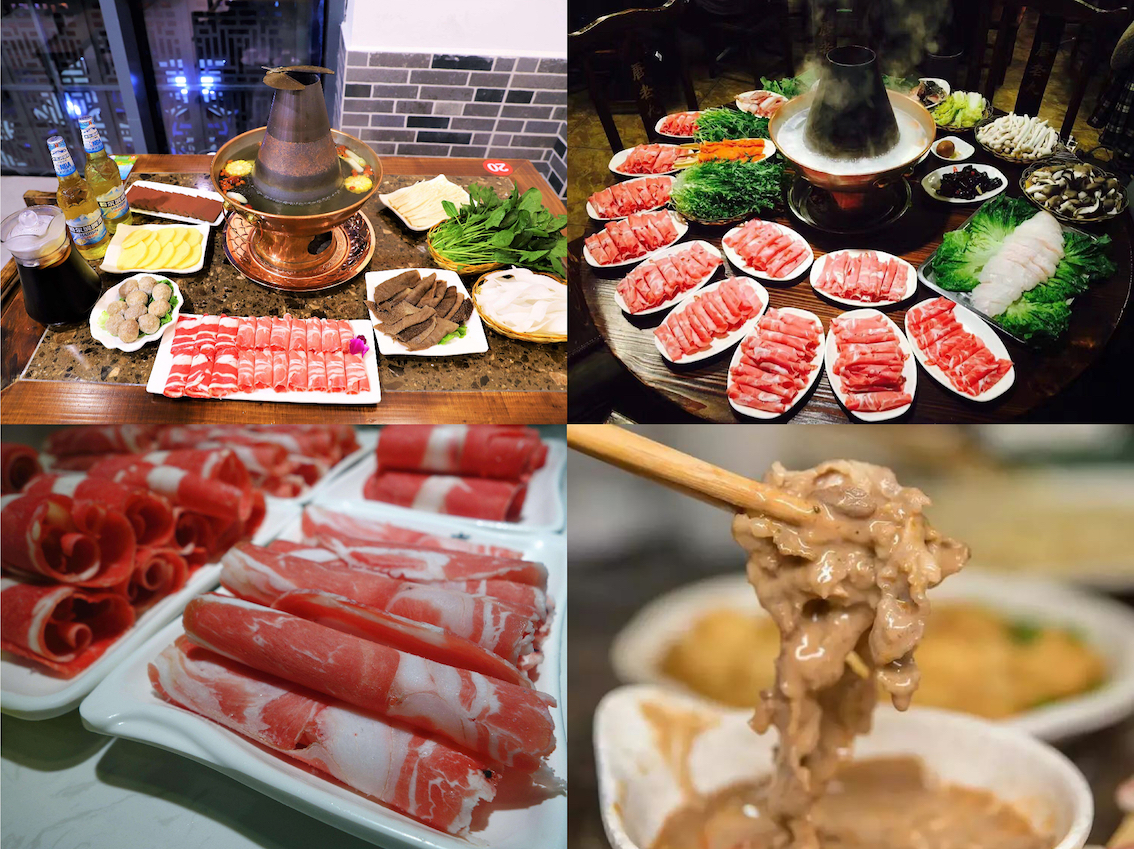
Mutton hot pot is also called the Mongolian hot pot. The characteristic of the Beijing mutton hot pot is boiled with charcoal fire in a copper pot. The mutton is delicate and has no odor. The mutton is sliced and cooked in the soup. People will take vegetables and fresh ingredients like mushrooms to boil together when they enjoy the Mutton hot pot.
There are many theories about the origins of the Beijing mutton hotpot, many people believed it originated from Genghis Khan. One time, due to an emergency, the soldiers needed to eat up soon and start fighting. The soldiers cut the frozen lamb into thin slices, poured them into boiling water, and took them out a few seconds later and then dipped them in the sauce. It was originally intended to fill the stomach, but unexpectedly became a delicacy, so this practice passed down and became popular in Beijing.
When referring to seasoning, the soul of the Beijing mutton hot pot must be the best sesame sauce. In addition to sesame sauce, you can also add fermented bean curd, garlic slices, coriander, etc. according to your taste and preference. Mutton hot pot is especially popular in winter. This kind of warm-up and stomach-warming food is especially suitable for the long and cold winter in the northern areas.

3. Noodles with Soybean Paste 杂酱面
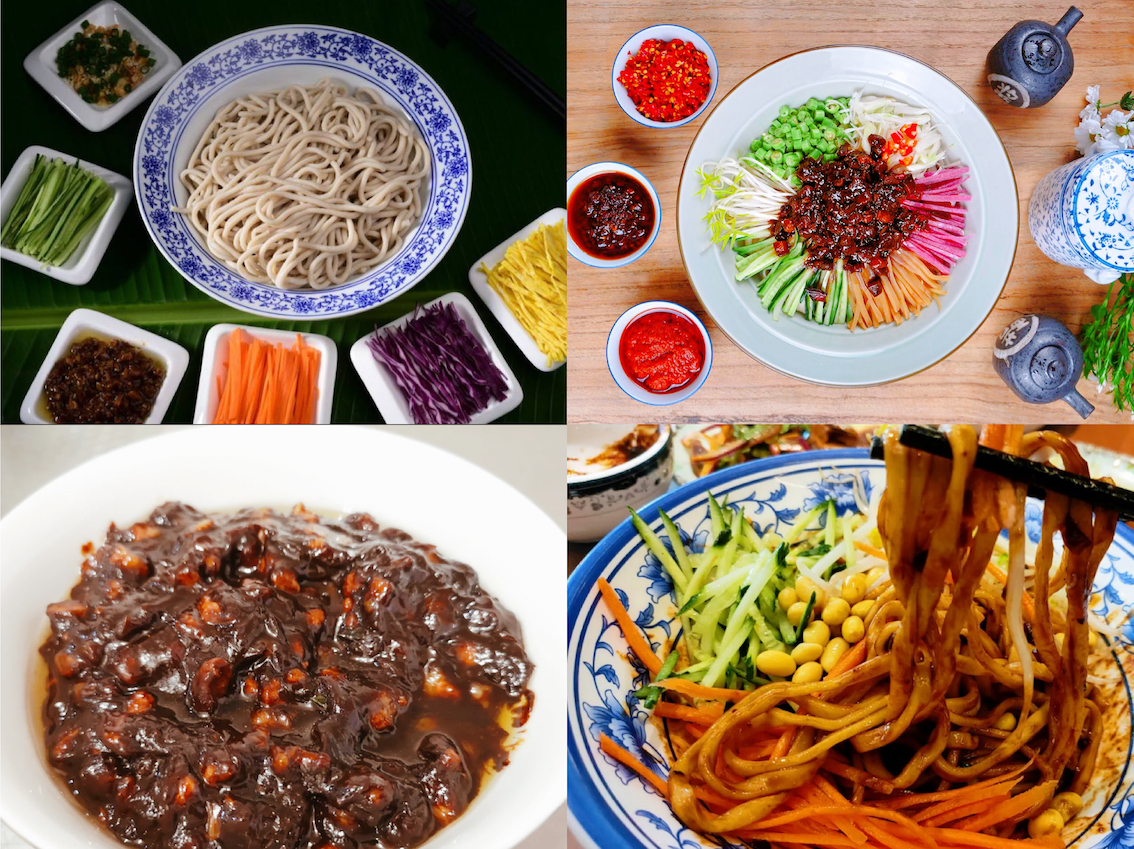
Beijing Soybean Paste Noodles is a traditional snack in Beijing and also one of the staple foods of Beijingers. This dish is made of some vegetables, fried sauce, and mixed with noodles, and very popular in northern China.
The essence of Beijing Soybean Paste Noodles is in the sauce, which is made with soy sauce and diced pork. In addition, chopped green onions, ginger, garlic, bell peppers, etc. and rock sugar together with hot oil and water for cooking. The side dishes are generally shredded cucumber, shredded radish, bean sprouts, green beans, soybeans, diced celery, etc.
It's like spaghetti in tomato sauce, different tomatoes and ingredients, different seasonings, so every tomato sauce has its own flavor. In the same way, the sauce for Beijing Soybean Paste Noodles is quite different, and every family and restaurant has its own unique flavor. As for the side dishes, each family or restaurant also has their own preferences, of course, cucumber and carrots are essential.

4. Jing Jiang Rousi (Shredded Pork in Beijing Sweet Bean Sauce) 京酱肉丝
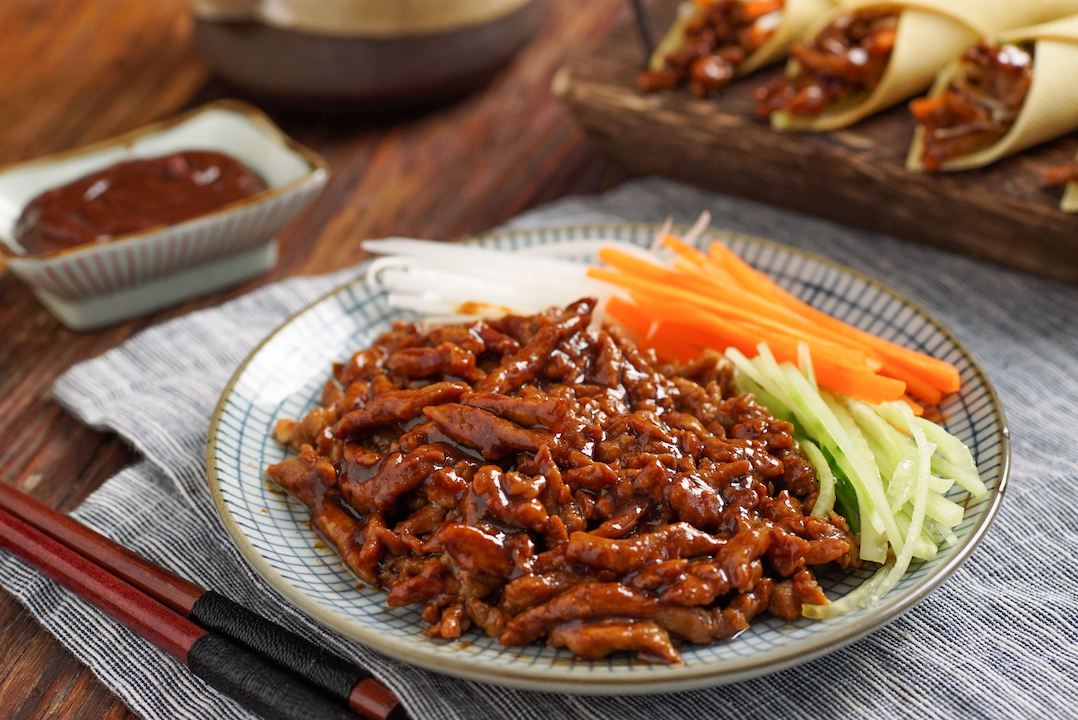
Jing Jiang Rousi belongs to Beijing cuisine, and is a classic dish in Chinese cuisine. The dish is made with lean pork, sweet bean paste, scallions, ginger and other seasonings. The taste is moderately salty and sweet, the sauce is rich and the flavor is unique.
As early as the 1930s, there was a pair of grandfather and grandson living in poverty. Grandpa replaced roast duck with pork, and added a homemade sauce to make the so-called "roast duck". When the grandson grew up, he became a good cook in Quanjude Restaurant but he missed grandpa's roast duck. After grandpa's guidance, grandson continued to innovate and improve the dishes. So here is Jing Jiang Rousi, which is rich in sauce and tender in meat.
Nowadays, Jing Jiang Rousi is also a home-cooked dish of the Chinese people, and the sauce is the soul of this dish. Therefore, each family and each restaurant has its own unique understanding and mastery of this dish, and its flavor is just a bit different.

5. Donkey Burger 驴肉火烧
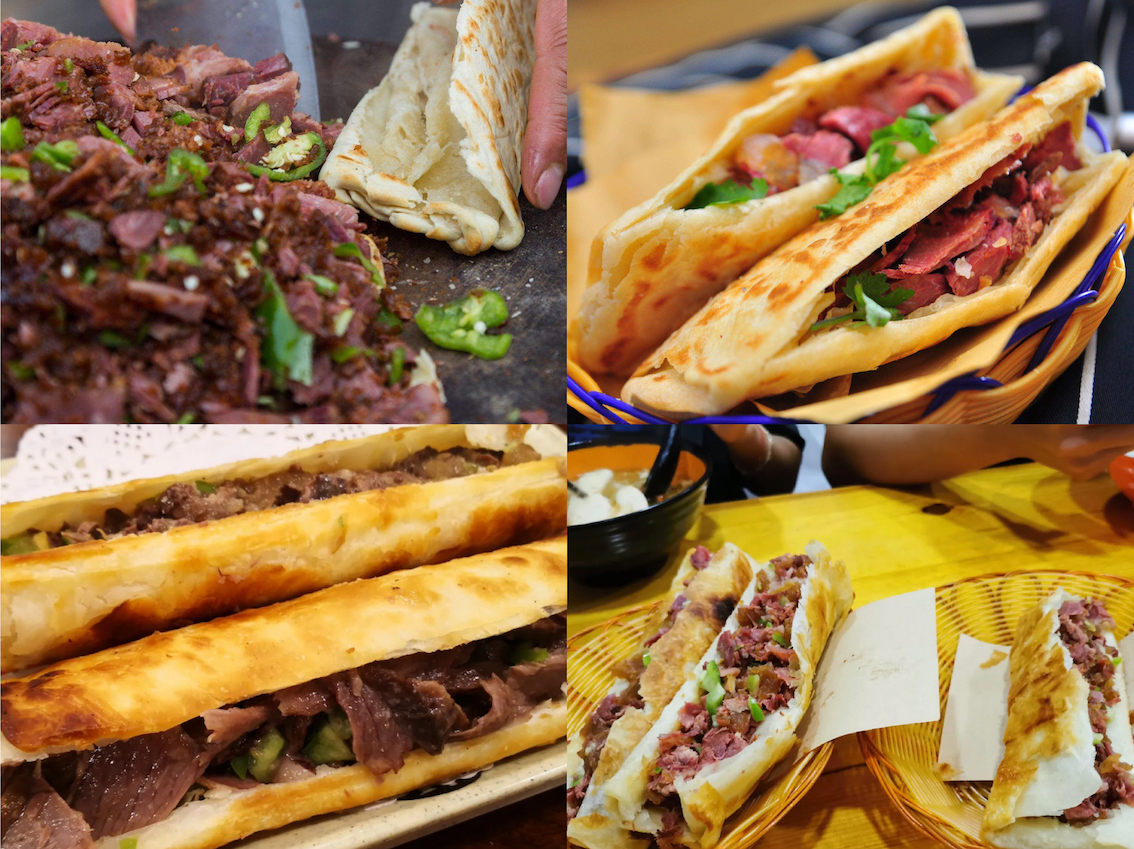
According to historical records, the Donkey Burger dates back to AD 1400, and it is a very popular traditional snack in North China. After continuous development and promotion, the Donkey Burger is eventually well-known all over China. The Donkey Burger can be seen everywhere in the streets and alleys of Beijing, completely integrated into the lives of local residents.
The donkey meat is chopped and stewed for a long time with nearly 20 kinds of spices such as soy sauce, chili, sugar. Then the donkey meat is stuffed into the crispy burger that has just been baked and finally topped with the special sauce. In many places, the baked burger is round. In Beijing, they are mostly square.
In modern medical research, donkey meat is a low-fat, high-protein food with high calcium, phosphorus, and iron content. Donkey Burger is famous in Beijing and throughout China.

6. Rolling Donkey 驴打滚

The Rolling Donkey is also called Fried Chop Rice Cake, is a traditional snack in Beijing, Tianjin, and Northeast China. It is named after the yellow soybean flour sprinkled in the final production process like the waves of yellow soil raised when the wild donkey rolls in the suburbs of Beijing, it is named "Rolling Donkey".
The raw materials for "Rolling Donkey" are rice flour, soybean noodles, sugar, sesame oil, osmanthus, etc. Its production is divided into three processes: dough wrappings making, filling, and forming. The outer layer of "Rolling Donkey" is covered with soybean flour, which is golden yellow, soft in the mouth, and unique in flavor.
The two most popular flavors are red bean paste and black sesame stuffing. The soybean flour in the outer layer can be tasted without chewing, which is a traditional snack for all ages. In theory, the Rolling Donkey can be stored at room temperature for two or three days, but we recommend eating it as soon as possible as it tastes best when it is just made.

7. Fermented Soybean Milk 豆汁
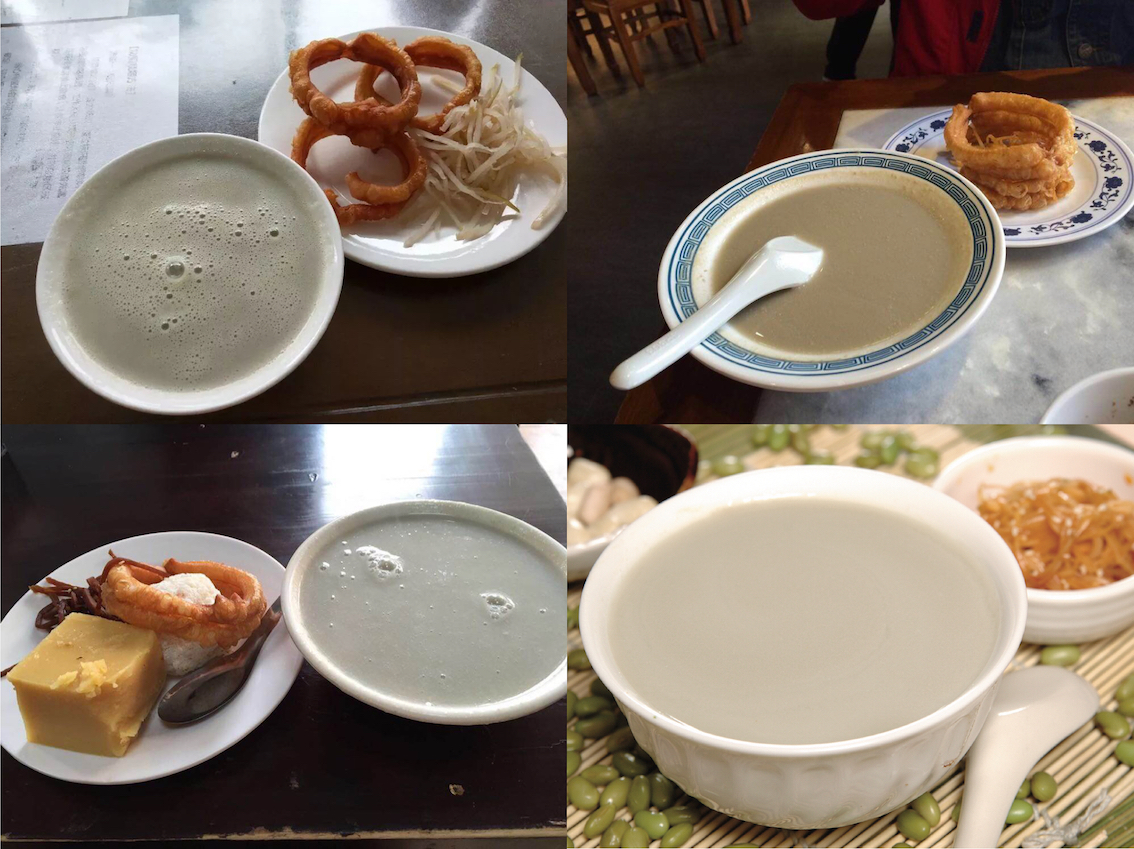
Fermented Soybean Milk is a unique traditional snack in Beijing, which has the effects of nourishing the stomach, clearing, and relieving the internal heat. According to records, Fermented Soybean Milk has a history of 300 years, and now most old Beijingers drink it at breakfast time with Jiao Quan (deep-fried dough circles) and some vegetable shreds.
Fermented Soybean Milk is produced by fermenting mung beans as the raw material, filtering out the remaining residue after making vermicelli and other foods. Because of its unique smell and taste, many people stay away from Fermented Soya-bean Milk, and even unable to swallow a mouthful. But people who like this taste are very fond of it, and they can't wait to have it for three meals a day.
Although Fermented Soybean Milk is unattractive in appearance and even has a strange taste that many people cannot accept, it is rich in protein, vitamin C, and crude fiber. This is why it has been loved by Beijingers for hundreds of years.

8. Tuckahoe Pie (Fu Ling Bing) 茯苓夹饼
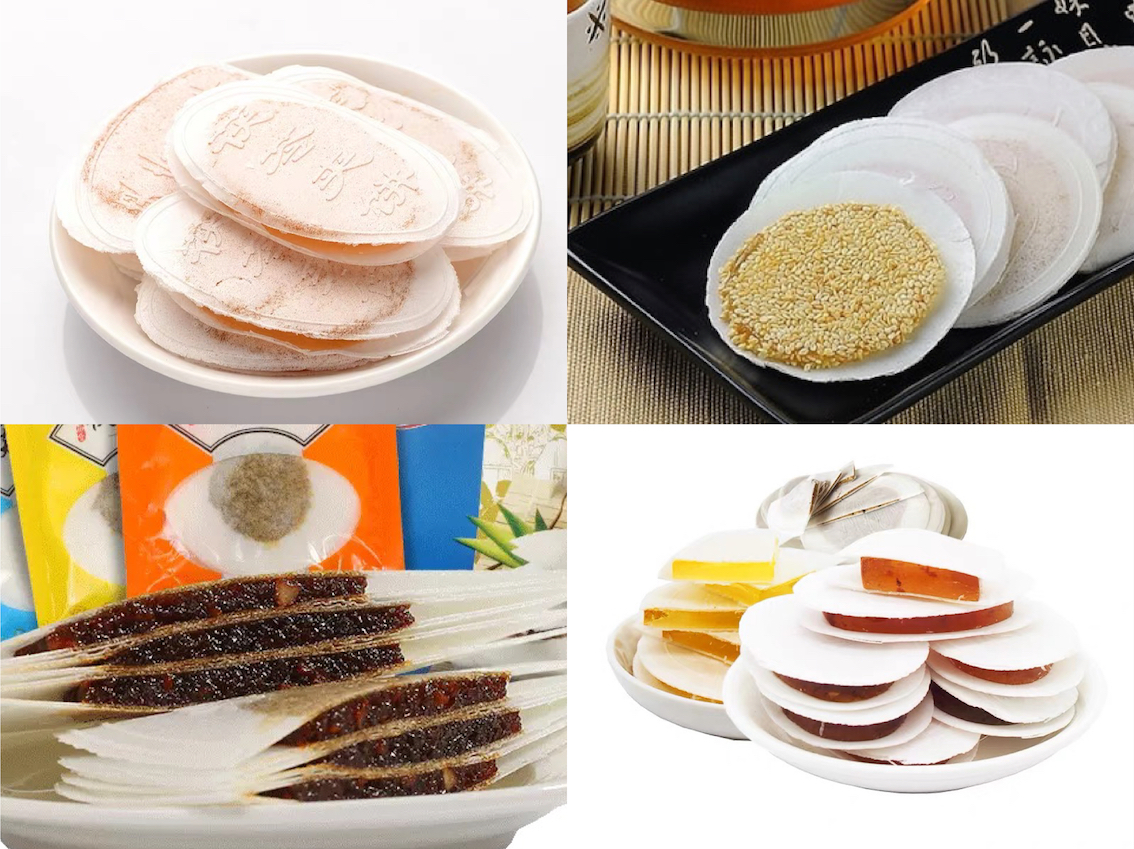
The Tuckahoe Pie, as its dough wrapper is as thin as paper and the color is white, much like the Fu Ling slices in Chinese medicine, so it is also called Fu Ling Pie. It is a nourishing traditional pastry produced in Beijing.
The crust of the Tuckahoe Pie baked with high-grade starch is as thin as paper and as white as snow. The filling is a selection of a variety of nuts, supplemented with sweet-scented osmanthus, honey, sugar, and pure Fuling powder. Sweet scent, melts in the mouth, refreshing and tasty. And the price is cheap, which can be used as a regular healthy food or snack.
The tuckahoe pies are basically individually packaged, which is light and easy to carry. They can be easily put in your backpack to replenish your energy when hiking in the Great Wall. Or take home as a gift to your family and friends after your China tour.

9. Sugar-Coated Haws (Tanghulu) 冰糖葫芦
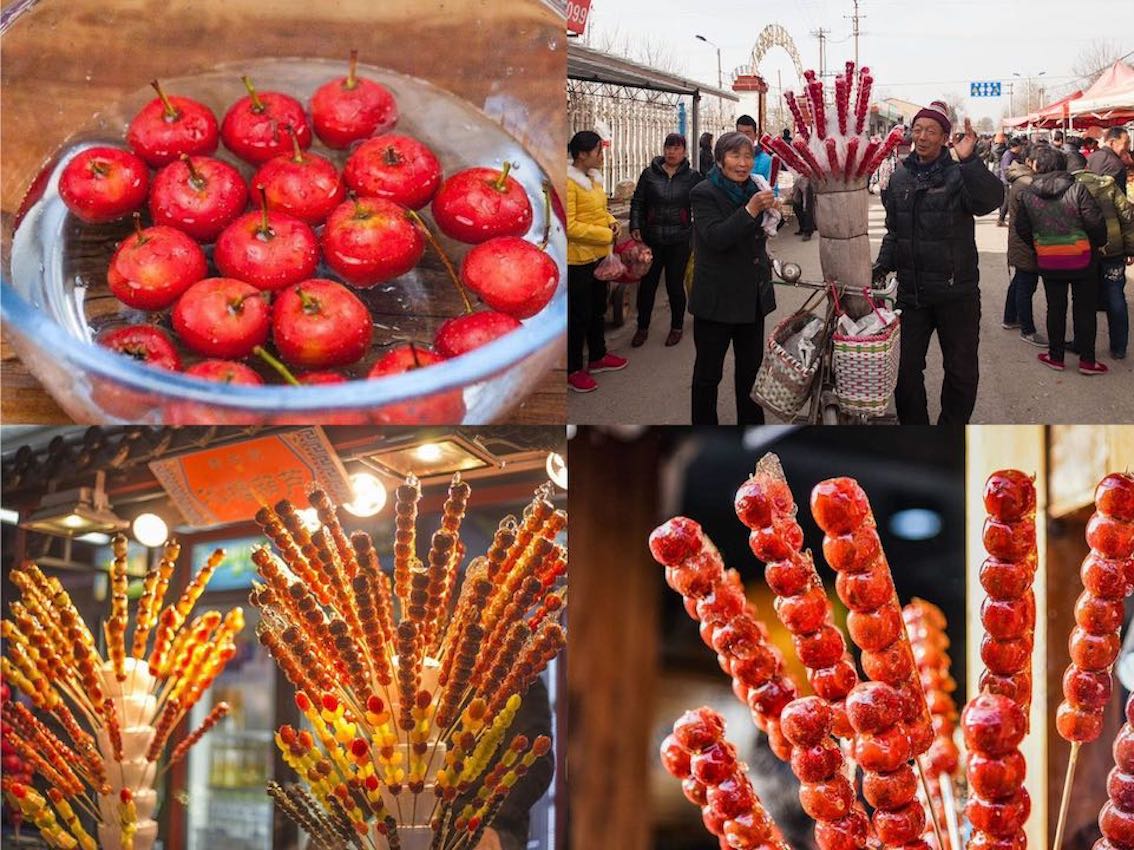
The Sugar-Coated Haws is a traditional Chinese snack. It is made by skewering wild fruits with bamboo skewers and dipped in maltose syrup. The syrup quickly hardens when exposed to wind. In the past, it was a common snack in Beijing in winter. It is usually made with hawthorn on a string. It is hard and sweet and tastes sour and sweet. Now it can be eaten all year round and is popular among children all over China.
The history of Sugar-Coated Haws can be traced back to the Song Dynasty (960-1279). At that time, it can be seen everywhere in Beijing's teahouses, theaters, streets, and lanes. It has now become a traditional Chinese snack. Sugar-Coated Haws has the effects of appetizing, nourishing skin, eliminating fatigue, etc.
Twenty or thirty years ago, mainly middle-aged and elderly men rode bicycles or carried a pole full of Sugar-Coated Haws and walked down the streets and chanted and sold it. Now it is mostly sold in small shops, and occasionally you can see itinerant stallholders near tourist attractions.

10. Stir-fried Pig Liver & Quick-fried Tripe 炒肝儿&爆肚儿
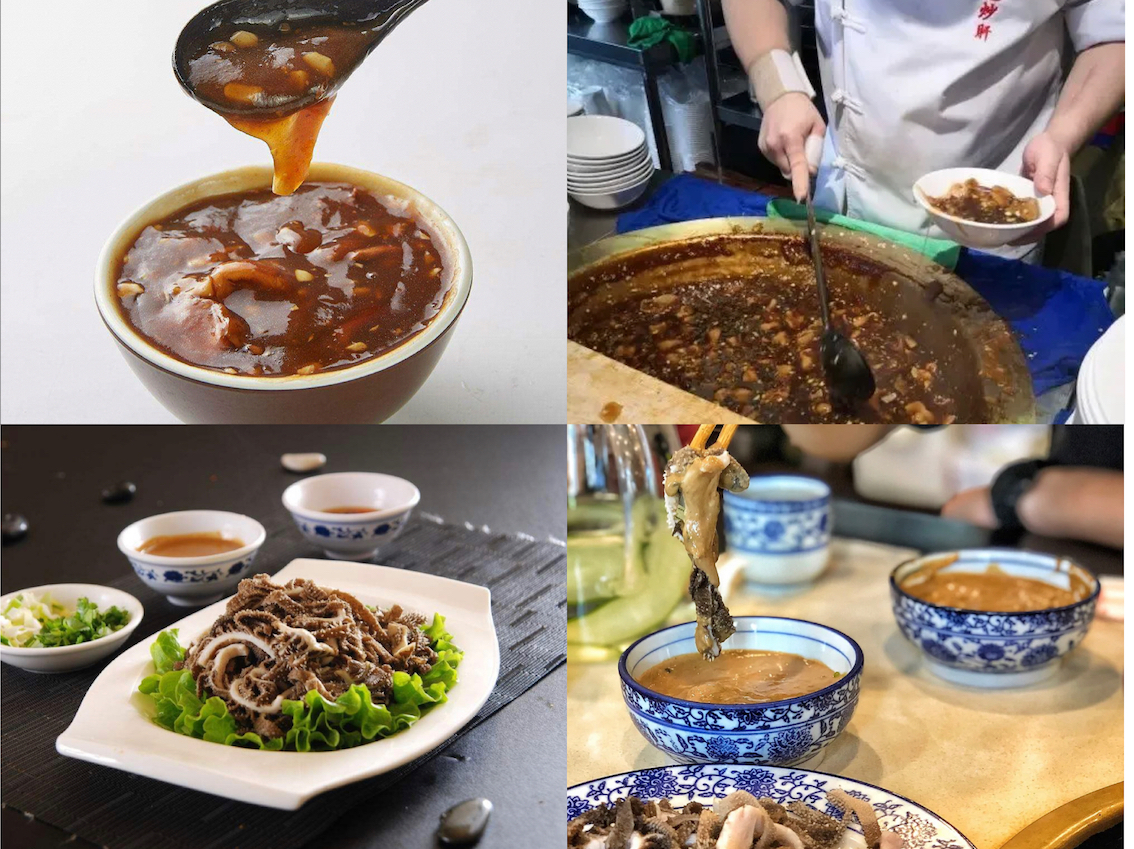
With the exception of foie gras, it seems that all animal innards are not popular in western countries. But in China, the offal of animals such as pigs, cows and goats can cook a variety of delicious foods, which are loved by the people. Cow tripe, goat tripe, and pig liver are Beijing people's favorite food after being processed by cooking.
The Stir-fried pig liver is a Beijing dish made from pig liver and large intestine as main ingredients, garlic and other ingredients as the auxiliary material, and then thickened by cornstarch. Seasoned with kinds of sauce, it has a rich flavor and excellent taste. It can be tasted as a snack or as a dish at all levels of restaurants in Beijing.
In Beijing, lamb tripe is generally used as the main ingredient of this dish - Quick-fried tripe. With chive flowers as auxiliary ingredients, plus fermented bean curd, soy sauce, sesame oil, green onions, vinegar, and other seasonings to enjoy this delicacy. The eating method is basically the same as that of lamb hot pot, and it is also the sesame sauce dipping sauce. Like the Stir-fried pork liver, you can find and enjoy it at all the various restaurants in Beijing.



















